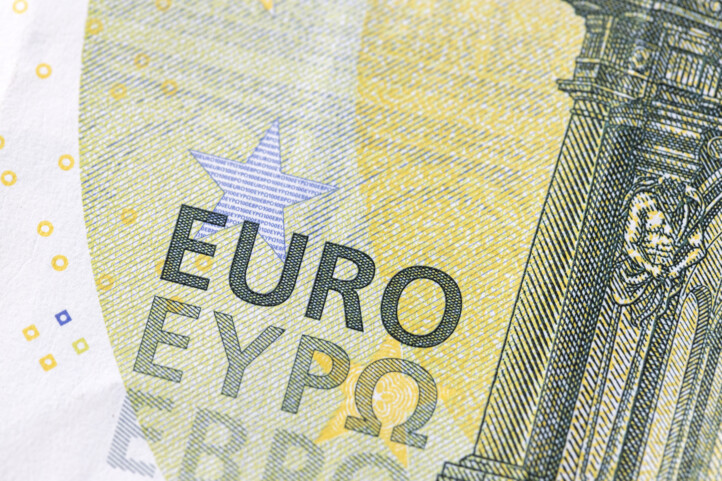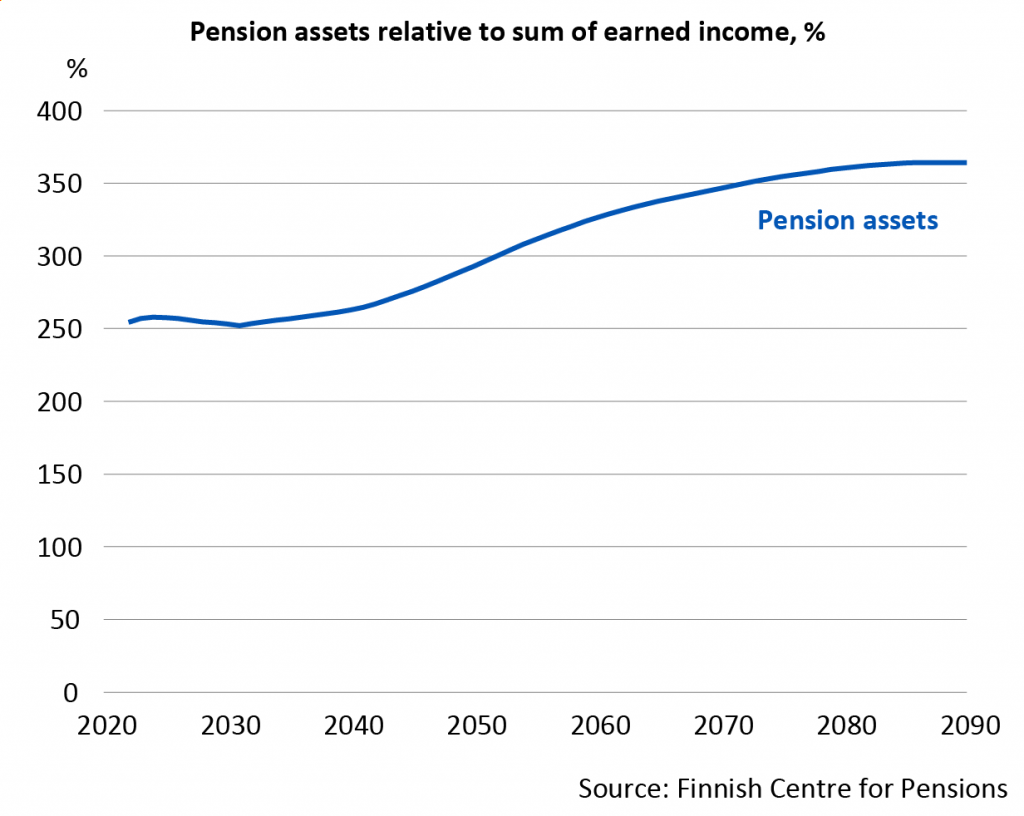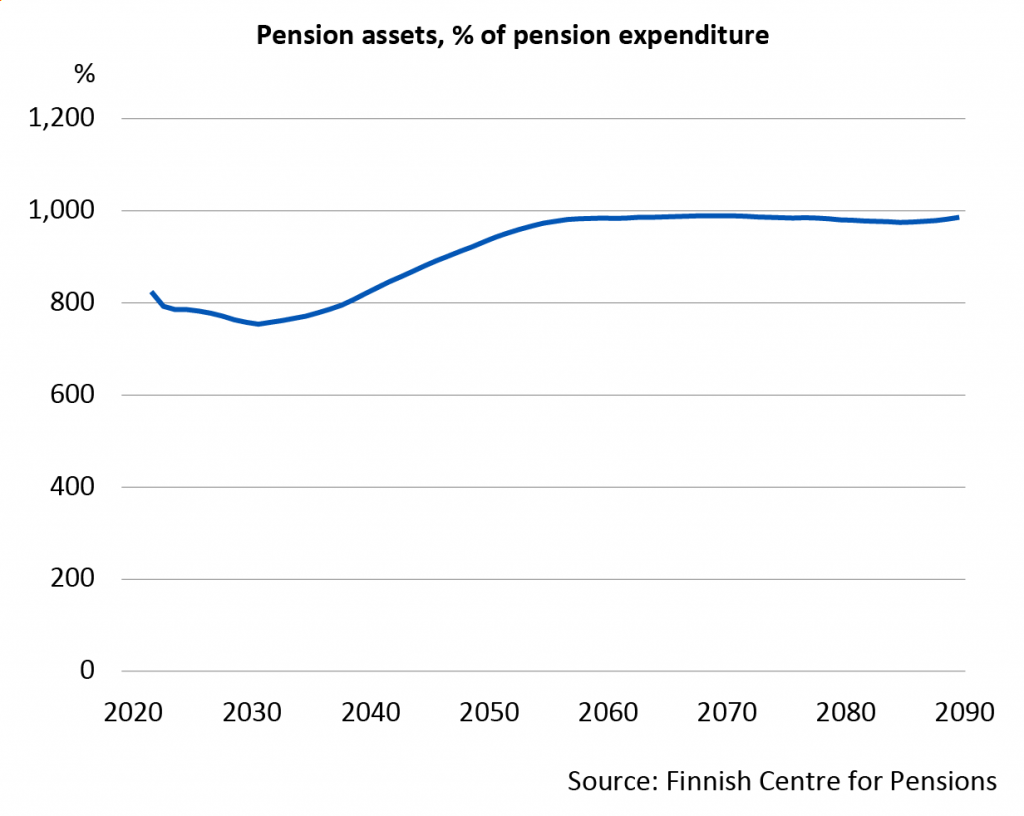A more comprehensive calculation of pension assets: Modest growth continues

The assets of Finland's earnings-related pension scheme will continue to grow moderately in the coming years but will accelerate around 2040. The upward pressure on the average contribution is around one percentage point, the Finnish Centre for Pensions estimates in a report. The new report extends the long-term projections of 2022.
In its latest report, the Finnish Centre for Pensions projects for the first time the development of average pension contributions and pension assets for the whole earnings-related pension system. The report complements previously published long-term projections and is therefore not an update but an extension of the projections.
“Although the world has changed a lot and unpredictably in recent years, the course of the earnings-related pension system is slowly turning. The changes in the direction of the system are relatively predictable, at least for the next few decades,” says Senior Mathematician Kaarlo Reipas of the Finnish Centre for Pensions.
The report examines the financing of the earnings-related pension system until 2090, with a special focus on public sector pensions. Overall, the outlook is rather favourable.
“The pension expenditure of municipalities and wellbeing services counties is not expected to increase significantly in the future. The current level of contributions appears to be sustainable well into the future. State pension expenditure will remain high for a few more years but will start to decline in the 2030s. Much depends on how the return on pension assets and the birth rate develop,” Reipas explains.
Pension assets growing faster than the insured payroll
The pension assets of the earnings-related pension system will amount to more than 240 billion euros in 2022. These assets are invested by pension providers in, among other things, shares and interest-bearing securities. The return on these assets is used to finance pension expenditure, which curbs the rising of the system’s average pension contribution.
The amount of pension assets is substantial, about 254 per cent of the insured payroll of the Finnish economy. The insured payroll refers to employees’ and self-employed persons’ insured wages and incomes over a one-year period, based on which earnings-related pensions are accrued and contributions are paid.
According to the projections of the Finnish Centre for Pensions, pension assets will grow moderately in the coming decades. Growth will accelerate in the 2040s, after which pension assets will grow faster than the payroll. By 2090, the ratio of expenditure to insured payroll will rise to around 364 per cent. In the same year, the amount of pension assets will rise to around 650 billion euros (adjusted for inflation).

“Thanks to the financing rules of the earnings-related pension system, pension assets accumulate in the first half of the century in preparation for rising pension expenditure in the second half of the century,” says Reipas.
By the end of 2021, annual earnings-related pension assets amounted to 850 per cent of pension expenditure. According to projections by the Finnish Centre for Pensions, the ratio will continue to rise over the next 30 years and eventually stabilise at around 1,000 per cent. This corresponds to about 10 years of pension expenditure.

The projections assume an annual real return on pension assets of 2.5 per cent until 2031 and 3.5 per cent from 2032 onwards.
Upward pressure on average contribution of around one percentage point
According to projections by the Finnish Centre for Pensions, the system’s average pension contribution will rise from around 25 per cent today to 26 per cent by 2090. The ratio of state funding to insured payroll will decline over the same period.
The average contribution level of the earnings-related pension system will follow the development of the private-sector contribution under the Employees’ Pensions Act, although the average contribution level of the earnings-related pension system will exceed the contribution level under the Employees’ Pensions Act in the first half of the century due to the compensatory payments made by municipalities and wellbeing services counties.
Projection results always depend on assumptions and legislation
At the Finnish Centre for Pensions, we make projections and forecasts about the future of the Finnish pension system. Our long-term projections cover 60-70 years into the future and are published in reports every two or three years.
The projections show how pension expenditure, benefit levels and financing will develop if demographic and economic assumptions are realised and there are no changes in legislation.
The new report extends the financial projections of the Finnish Centre for Pensions to the entire earnings-related pension system. One of the main objectives is to provide an estimate of how pension assets will develop. The main extensions concern the projections of the state pension system and the pension systems of the municipalities and wellbeing services counties in which the employees of Keva’s member organisations are insured.
The assumptions in this report are the same as in the long-term projections published in 2022. As this report is an extension of the content of the 2022 projection, economic and other developments after August 2022 have not been considered.
Publication:
